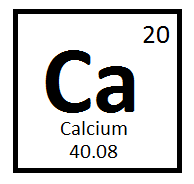
Timberlake Chemistry
Quiz
•
Science
•
8th Grade
•
Hard
+4
Standards-aligned

Lisa Thompson
FREE Resource
15 questions
Show all answers
1.
MULTIPLE CHOICE QUESTION
1 min • 1 pt

How much liquid water can you change 20 C if you apply 20,000 J?
500 g
100,000 g
250 g
350 g
Tags
NGSS.MS-PS1-4
NGSS.MS-PS3-4
2.
MULTIPLE CHOICE QUESTION
1 min • 1 pt

What is the atomic mass of this element?
20
60
40
41
3.
MULTIPLE CHOICE QUESTION
1 min • 1 pt

What does a represent?
Proton
Neutron
Electron
Tags
NGSS.MS-PS1-1
4.
MULTIPLE CHOICE QUESTION
1 min • 1 pt

What is the atomic number of this element?
20
60
40
41
Tags
NGSS.MS-PS1-1
5.
LABELLING QUESTION
1 min • 1 pt
Identify which are the products and reactants
products
reactants
Tags
NGSS.MS-PS1-2
NGSS.MS-PS1-5
6.
MULTIPLE CHOICE QUESTION
1 min • 1 pt
The Law of Conservation of Mass states that
compounds and elements are the same
elements can be destroyed
matter cannot be created or destroyed, but can be transformed
mass is the same for all the objects if they need to exist
Tags
NGSS.MS-PS1-5
7.
MULTIPLE CHOICE QUESTION
1 min • 1 pt
How is a chemical change different from a physical change?
there is no difference
a physical change creates a new substance
a chemical change creates a new substance
Tags
NGSS.MS-PS1-5
Create a free account and access millions of resources
Similar Resources on Wayground

15 questions
Molarity and Dilutions
Quiz
•
10th Grade - University

15 questions
Concentrations of Solutions
Quiz
•
7th Grade - University

15 questions
Solution Concentration
Quiz
•
7th Grade - University

15 questions
Molarity and Dilutions
Quiz
•
10th Grade - University

15 questions
Molality
Quiz
•
12th Grade - University

15 questions
Concentration and Molarity
Quiz
•
10th Grade - University

15 questions
High School Chemistry Review
Quiz
•
11th Grade - University

20 questions
CHEMISTRY IN BIOLOGY
Quiz
•
9th Grade
Popular Resources on Wayground

55 questions
CHS Student Handbook 25-26
Quiz
•
9th Grade

10 questions
Afterschool Activities & Sports
Quiz
•
6th - 8th Grade

15 questions
PRIDE
Quiz
•
6th - 8th Grade

15 questions
Cool Tool:Chromebook
Quiz
•
6th - 8th Grade

10 questions
Lab Safety Procedures and Guidelines
Interactive video
•
6th - 10th Grade

10 questions
Nouns, nouns, nouns
Quiz
•
3rd Grade

20 questions
Bullying
Quiz
•
7th Grade

18 questions
7SS - 30a - Budgeting
Quiz
•
6th - 8th Grade
Discover more resources for Science

20 questions
Lab Safety and Equipment
Quiz
•
8th Grade

24 questions
Flinn Lab Safety Quiz
Quiz
•
5th - 8th Grade

20 questions
Scientific method and variables
Quiz
•
8th Grade

20 questions
Lab Safety review
Quiz
•
8th Grade

10 questions
Lab Safety Essentials
Interactive video
•
6th - 10th Grade

20 questions
Lab Safety
Quiz
•
8th Grade

10 questions
Scientific Method
Lesson
•
6th - 8th Grade

20 questions
States of Matter and Changes
Quiz
•
8th Grade
